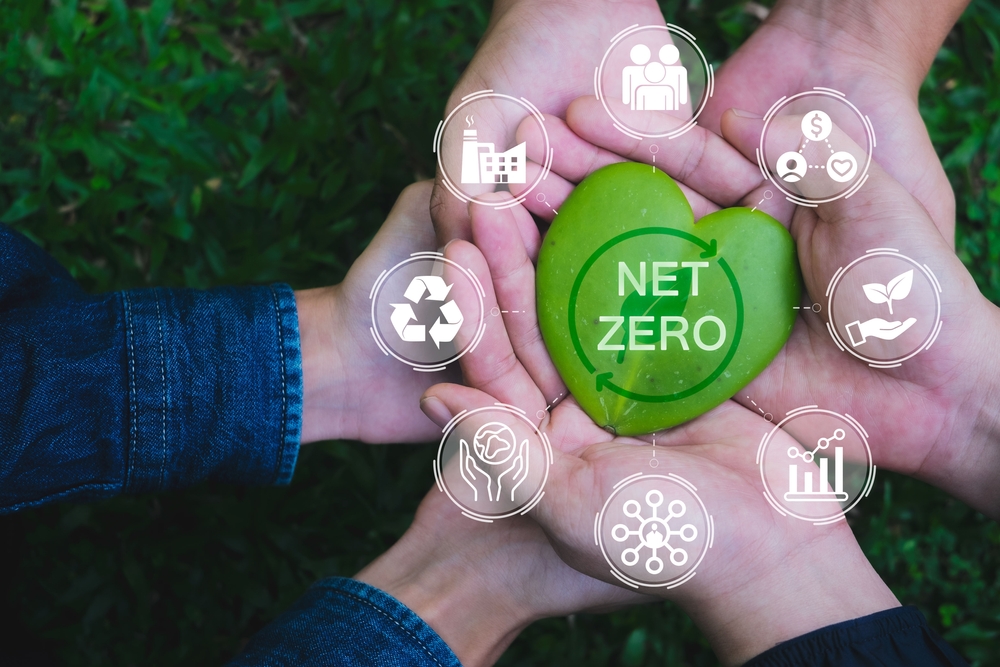What role does technology play in driving sustainability efforts?
It is a big but important question, and it’s why I’m so excited about the work I get to do. In essence, sustainability revolves around achieving more with less and ensuring we can forge a brighter future that respects planetary boundaries. I believe harnessing technological solutions is imperative to drive progress towards this better future, particularly within various industries. As we go about our lives relying on essential resources, the challenge lies in elevating the quality of life for everyone while adhering to sustainable practices. Technology has a huge role to play in achieving this goal.
What are some of the key sustainability goals and targets that AVEVA plans to focus on in the coming year?
AVEVA is deeply committed to an ambitious sustainability agenda that spans a wide spectrum of initiatives. Our multifaceted approach encompasses various aspects of our business and value chain. Firstly, we emphasize how we operate as a company and our dedication to modeling environmental and ethical stewardship. This dimension is what we refer to as our “operational footprint”.
Moreover, we recognize that our core business, technology, plays a pivotal role in shaping the sustainability landscape. We refer to this as our “technology handprint,” where we actively work to ensure that our solutions empower industries to embrace circular practices, decarbonize, and enhance resilience.
Additionally, because we are a technology business ourselves, we are talent-driven and talent-focused. Our “inclusive culture” pillar underscores our commitment to fostering an environment where everyone feels welcome and valued. This, in turn, ties back to our technology handprint, as we firmly believe that diversity and inclusion fuel innovation.
To support our customers on their decarbonization journey, we are driven to lead by example. We’ve established a set of 15 goals to achieve by 2025, and I’m proud of the progress we’ve already made towards these goals. We’ve done a lot to reduce our scope one and scope two emissions, which are associated with our own operations and the energy we purchase to support our facilities and offices, for example. We’ve achieved a 93% reduction there. However, our primary focus is now on our scope three emissions because, as part of our ambition, we aim to decarbonize our entire value chain.
We are also working to ensure that our software is designed with green principles and that we measure its energy consumption. To achieve this, we have labs in our R&D centres in India and California. Our customers, especially in the energy sector, are transitioning to future fuels, and we need to ensure that our solutions can support them in that transition. So, we are constantly working to ensure that our solutions are both low-carbon by design and fit for the energy transition in terms of their capabilities.
How has AVEVA integrated sustainability into its core product strategy, and what specific sustainability capabilities have been added to your software portfolio?
If we consider the ongoing energy transition we just discussed, our primary focus revolves around assisting energy providers in decarbonizing their existing assets and value chains. We’re also dedicated to expediting the adoption of renewable technologies, such as wind, solar, and biofuels, and even exploring emerging technologies like small modular nuclear reactors. Furthermore, our efforts extend to pushing the boundaries of the current energy system by supporting large-scale carbon capture, the widespread production of green hydrogen, and the development of advanced synthetic fuels.
Within these realms, the AVEVA portfolio is actively contributing to progress. Our collaboration with Repsol, a multinational energy company based in Spain, is a case in point. They harness AVEVA’s Process Optimization and PI Vision tools to optimize their energy and utility usage, contributing to a 20% drop in annual carbon dioxide emissions at the Coruña refinery.
AVEVA PI System is also being used by many of our customers to achieve their sustainability objectives, playing a crucial role in collecting consistent and reliable real-time data. This is especially vital in the renewable energy sector, where the solution is helping prevent asset failures, minimize equipment downtime and balance fluctuations in supply and demand. Dominion Power, for example, identified and prevented 42 potential equipment failures in just one year and achieved a 50% increase in speed-to-market of vital environmental data.
Is AI in the context of sustainability something that excites you?
AVEVA has an established Center of Excellence dedicated to artificial intelligence. We are increasingly focusing on how AI can be harnessed and deployed to drive sustainability. In the context of the ongoing energy transition, AI has a significant role to play in making technologies that may not currently be economically viable more cost-effective and scalable. Within the context of the AVEVA portfolio, we are looking at how AI can support the development of green hydrogen and carbon capture at scale.
AVEVA Process Simulation, for example, assists engineers in the early stages of design by allowing them to map out processes and identify ways to meet both profitability and environmental objectives.
We’ve already incorporated additional libraries for electrolyzers and renewables into the solution. This empowers engineers to plan and optimize green hydrogen facilities, considering factors like weather patterns and the variability associated with wind and solar resources. Now we are looking at adding AI-infused modeling capabilities to speed up and improve the optimization process, something we have already done for carbon capture.
However, it’s crucial to emphasize that the quality of underlying data remains paramount. AI models require proper training on high-quality data to unleash their full potential. While AI holds immense promise, we also recognize that addressing the climate crisis requires a holistic approach that encompasses not only technology but also human factors. It’s a complex challenge that demands a multifaceted solution.
Can you provide examples of the innovative sustainability concepts delivered during AVEVA’s hackathons?
We have been hosting hackathons for a while now, and we believe it’s an excellent way to tap into our pool of homegrown talent. These events bring together individuals to brainstorm and innovate across various topics, with sustainability consistently ranking among the most popular.
A noteworthy example from last year’s hackathon involved addressing the readiness of our solutions for green hydrogen. This initiative resulted in identifying how capabilities from across the AVEVA portfolio could be leveraged and integrated to support end-to-end efficiency across the green hydrogen value chain.
More recently, we’ve placed a growing emphasis on solar energy. As our customers increasingly venture into solar farm projects, we’re dedicated to ensuring that our solutions can effectively support them in this endeavor, including electric vehicle charging infrastructure.
How does AVEVA measure the impact of its sustainability framework and program, and what are the key metrics used?
Once again, it depends on the goal, and we are aligned with global standards for impact measurement. When it comes to our climate initiatives, we follow the GHG Protocol. Our goals and targets are focused on becoming net-zero ready by 2025. We’ve also set objectives related to business travel emissions, aiming for at least a 20% reduction to avoid a post-COVID bounce back. These targets ladder up to our 2030 goal, validated by the Science Based Targets initiative, which is to reduce AVEVA’s overall emissions in line with the highest level of ambition under the Paris Agreement.
Furthermore, we’ve established goals for our product portfolio. Currently, we’re conducting maturity assessments for our products to evaluate their progress in green product design principles. In a broader context, we’ve been actively engaging with our supply chain to ensure our suppliers understand our environmental commitments and ESG goals. So, indeed, we’ve set a variety of measurable objectives to drive sustainability.
How do you view your role in addressing climate change at an international event like COP28?
I’m thrilled about this opportunity. It’s always an immense privilege to participate in these discussions. COP has undeniably grown in significance and stands out as a unique forum. Climate change is a global issue, transcending borders as pollution and CO2 emissions know no boundaries. Hence, a global discussion is imperative. It’s crucial to convene leaders who can make commitments and drive progress in this area.
Over the years, I’ve observed that business entities have evolved into advocates within the COP framework. They are actively playing an advocacy role, pushing for necessary changes and an acceleration of the climate agenda. Companies are also taking proactive steps, not waiting for regulations, and are spearheading initiatives to electrify their vehicle fleets and help decarbonize their local grids. They are also exploring collaborative efforts across businesses.
One example of a public-private partnership we’re involved in is the First Movers Coalition. Initially established by the World Economic Forum and the US State Department, it has gained support from governments worldwide and numerous businesses. The core commitment of this coalition is to signal a willingness to pay a premium for environmentally friendly products that can drive change. For us, it involves committing to purchase the next generation of sustainable aviation fuel. This commitment aims to send a strong demand signal from the corporate sector, emphasizing the need for these new technologies. Currently, we have supply limitations, so it’s crucial to ensure there is substantial demand and support for these innovations on the horizon.










Discussion about this post